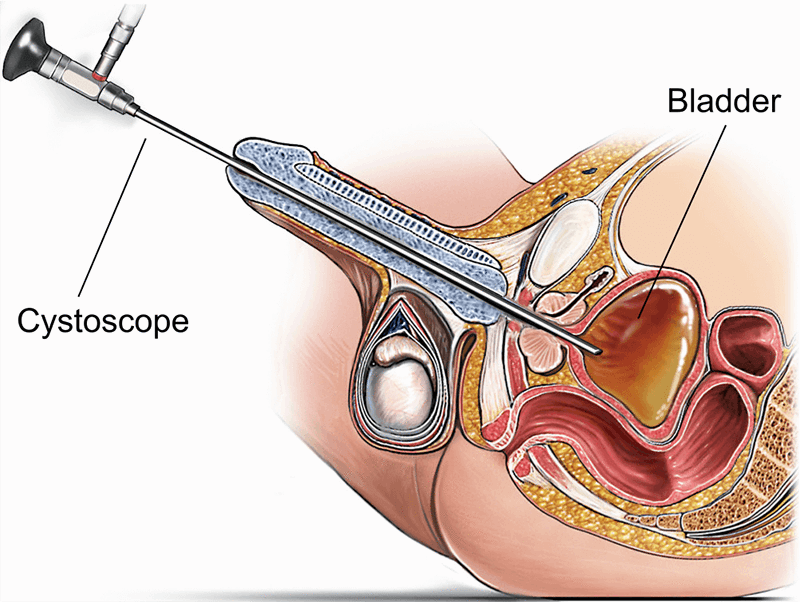It is often used to find causes of bleeding or blockage, or any abnormalities of the bladder and its lining .
How is Cystoscopy Performed?
Cystoscopy is most often done as an outpatient procedure. Before the procedure you will empty your bladder. Then you will be placed on an exam table. A liquid or gel local anesthetic may be used on your urethra. The average cystoscopy takes about 5 to 10 minutes.
The cystoscope is inserted through the urethra into the bladder. The cystoscope is a thin, lighted tube with lenses. Most often it is bendable, but some models are rigid. Water or saline is infused through the cystoscope into the bladder. As the fluid fills the bladder, the bladder wall is stretched so the urologist can see clearly .
What are the Results of Cystoscopy?
The bladder wall should appear smooth, and the bladder should be normal size, shape and position. There should not be any blockages. If any tissue appears abnormal, the cystoscope can be used to remove a small sample.
After the cystoscope is removed, your urethra may be sore and you may have a burning feeling for up to 48 hours. You may find some blood in your urine at first, but this should go away within 12 to 24 hours. If you still have pain, or if you get a fever or your urine is bright red, consult your doctor .

